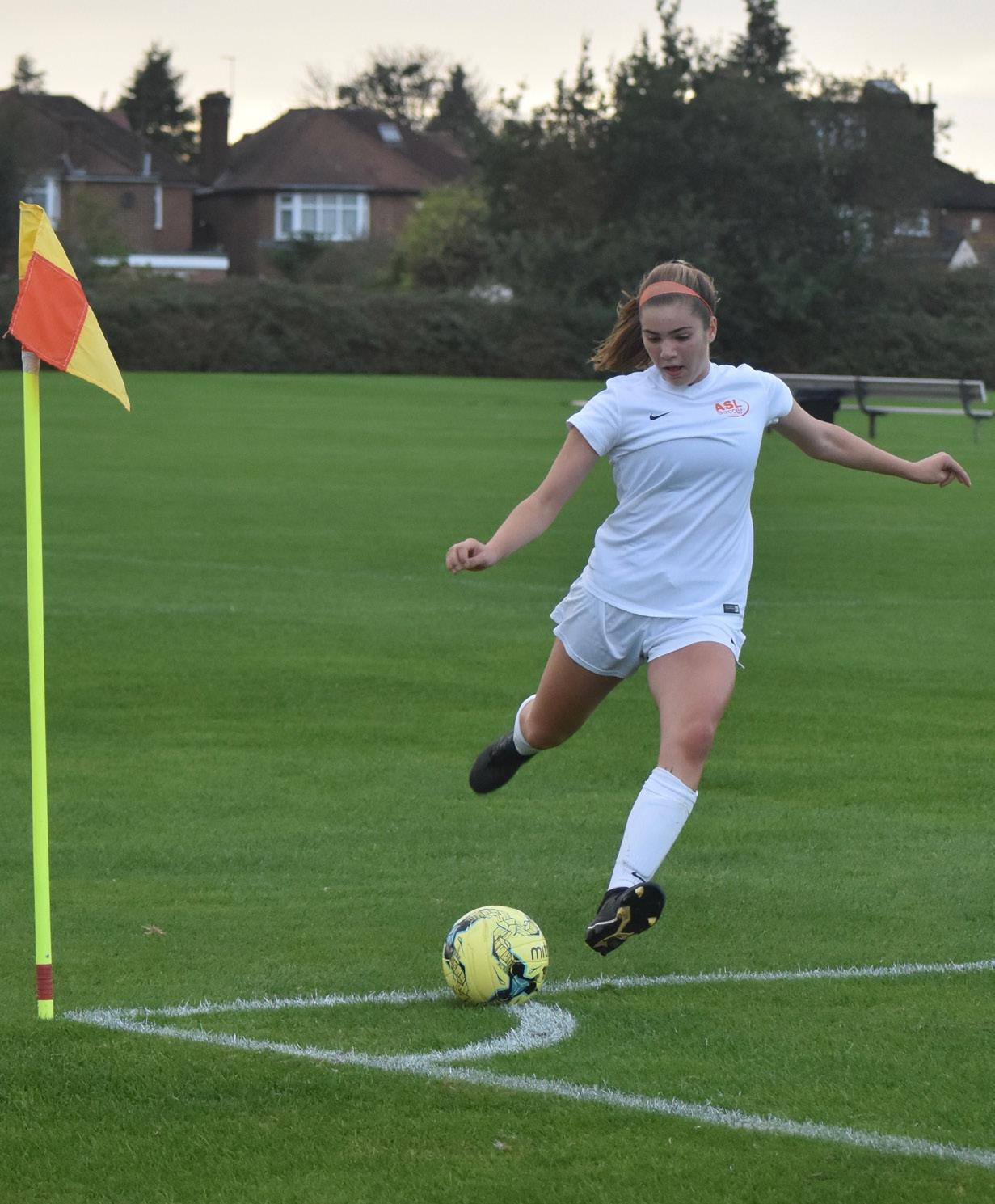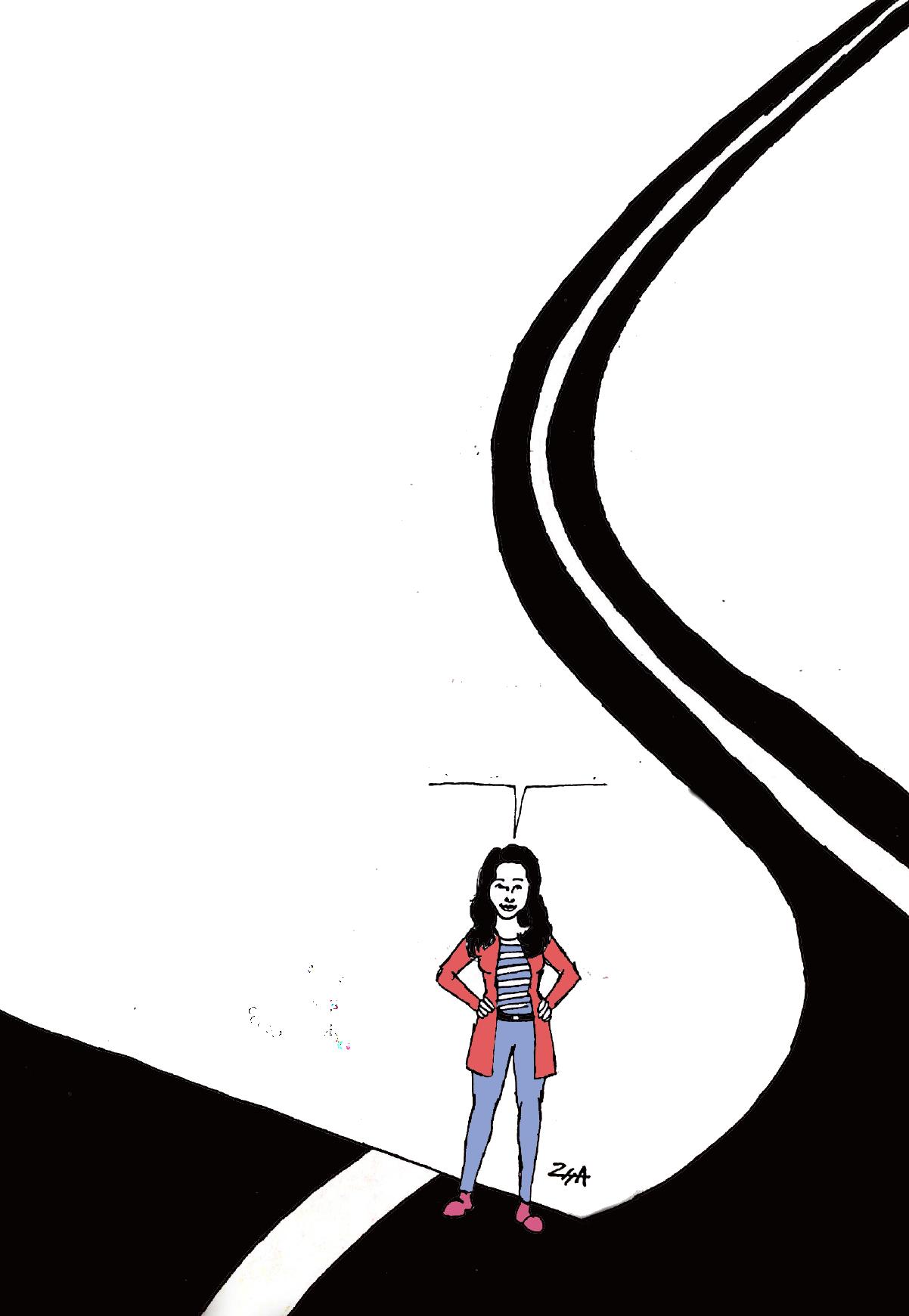
28 minute read
Opinions 7
by The Standard
OPINIONS History teaches vital lessons
In the past month, we have witnessed the world abruptly transform. From the shut-downs of our favorite local businesses and shops to the closure of international borders, our lives have undergone a considerable amount of change and challenge.
Advertisement
While what we are experiencing is new to us, numerous pandemics have swept the Earth thousands of years before our existence. People, with barely any knowledge of science nor any reliable medical care systems in place, endured the deadliest viruses and diseases.
While the current pandemic has already devastated national order, shattered international economies and wrecked families all across the globe, we need to acknowledge that we live unspoken, but prevailing social rules, such as “take only what you need,” have disappeared into thin air.
In March, people were ripping hand sanitizers off the hospital walls. People were (and are) physically harassing others on the basis of their ethnicities. People were (and are) making up all sorts of unacceptable, false and over-exaggerated posts on social media. Our society is in a state of chaos.
Additionally, at the start of lockdown, panicked shoppers were overbuying produce and essentials. Supermarket shelves were left vacant as people ignored all standards of social behavior amid great panic, with the hope of ensuring the most for themselves and their families.
We became indifferent to the fate anxiety, people are continuing to violate any types of restrictions – social or legal – in place.
According to Politico, many Athenians refused to adhere to quarantine as they continued to engage in a variety of social events.
However, such disregard brought about various consequences. Many Atheninians faced imminent death as corpses piled on top of one another on the streets.
This imagery reminds me of the dead bodies lying on the streets of Ecuador in April and May as a result of a massive COVID-19 outbreak.
In addition to the numerous comparisons that could be drawn between COVID-19 and the Plague of Athens, we can also learn a great amount of inthe orders of our government.
in a world brimming with countless privileges that our ancestors did not obtain.
Therefore, it is our duty to listen to the wise voices of the past, as they can teach us valuable lessons on the situation we are experiencing today.
For instance, consider the plague that hit Athens in 430 B.C. It was an epidemic that ravaged the ancient Greek city amidst the Peloponnesian War, killing 75,000 to 100,000 people, including the Athenian leader Pericles.
Besides the numerous deaths, the plague had an overwhelming amount of social consequences.
Thucydides, an Athenian general and historian, described the vanishing of the previously-upheld social morals in his own book “The History of the Peloponnesian War.” He stated that “the catastrophe was so overwhelming that men, not knowing what would happen next to them, became indifferent to every rule of religion or law.”
Fast forward 2,440 years and we are witnessing a similar phenomenon:
8 Opinions
of others as we started to prioritize ourselves and our needs first.
While our society has undergone a colossal amount of change since 430 B.C., Thucydides’ message continues to be relevant today. The uncertainty of our future during catastrophes overwhelms us, and pushes us to cross all norms and boundaries that we previously validated and respected.
The parallels between today’s society and that of ancient Greece don’t just stop there. The lack of adherence to laws amid great panic led to the enforcement of stricter policies in Athens.
Similarly, when I leave my house to run essential errands, I see other groups of friends outside, violating U.K. prime minister’s stay-at-home order.
People’s neglect of social distancing orders led to the allocation of security and police across a diverse range of neighborhoods in London to ensure that people remain indoors.
These contraventions further prove that amid national and international sightful lessons from the experience of our ancestors.
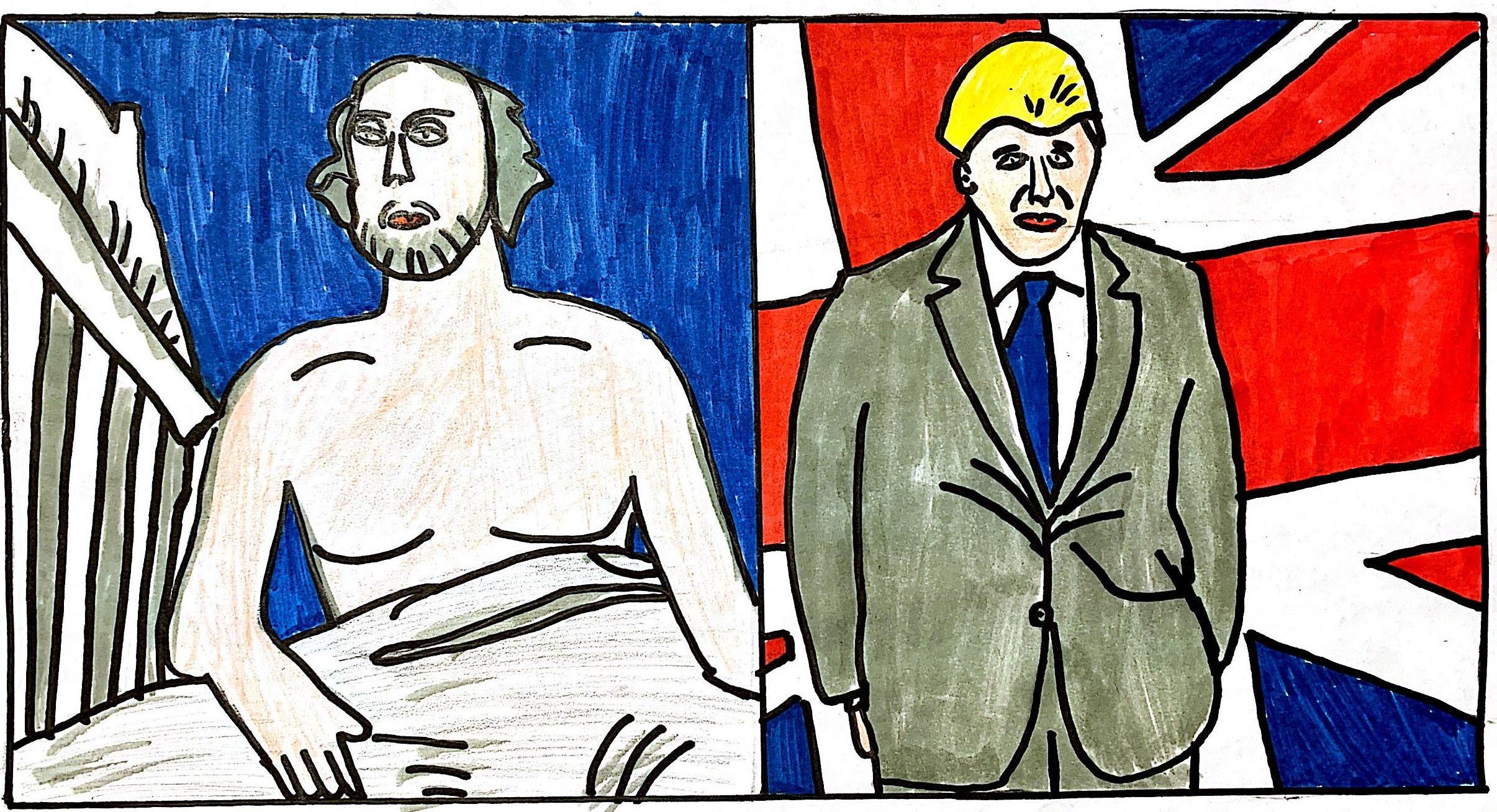
One of the key takeaways is that we need to adhere to our leaders’ orders in times of great panic.
For instance, when Pericles attempted to institute a nationwide quarantine, it failed – Athenians blindly disregarded his advice, which resulted in disastrous consequences. Boris Johnson, who has indeed previously declared the Athenian leader Pericles his historic idol, is working tirelessly to contain the virus by issuing social distancing orders along with drafting other forms of action. While it is clear that our leaders don’t always make the right decisions, in times of crisis, we need to listen closely to their advice if we want to ensure our health and safety.
By ignoring social distancing orders, we are not only putting ourselves in danger, but also our families, friends and other people with whom we come into contact.
Therefore, to avoid what happened in Athens, we are better off adhering to
Secondly, it is evident that even as time goes by, human nature doesn’t change. This idea is stated by Thucydides himself, who expressed that people will always react in similar ways when faced with catastrophes.
As the Athenian plague ignited panic among individuals, their moral compasses vanished. Doesn’t this sound familiar?
We need to remember that even amid great panic, we must watch out for others.
For instance, don’t be a panic buyer and help those around you to the best of your ability. With all the safety precautions in place, attempt to donate food to the NHS or help those at highrisk of morbidity obtain necessities. polina_dashevsky@asl.org POLINA DASHEVSKY
ILLUSTRATION BY POLINA DASHEVSKY
The prioritization of our own selves leads to greater problems in our society, paving the way for further conflict, chaos and division.
Do not blame the virus on others, nor harass specific racial and ethnic groups for it. As we are all in this situation together, we need to help one another, rather than pick fights and point fingers.
Finally, even in times when the world is overwhelmed by chaos and panic, there is no need to escalate anxiety by creating exaggerated or inaccurate social media posts; even in times of hardship, try to spread positivity. What we need is more generosity, cooperation and understanding.
Remember, we learn history in schools not only to broaden our general knowledge, but also to ensure that future generations learn from their ancestors’ mistakes.
Therefore, we need to carefully think about the lessons the Athenian Plague teaches us. They will definitely prove to be crucial, if they haven’t already.
helen_roth@asl.org HELEN ROTH
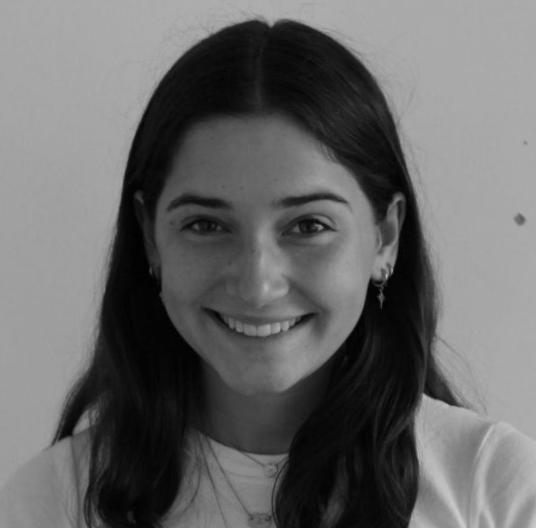
As summer of 2020 approaches, I can’t help but think about how much has changed since last year: how much I have grown and how much I have learned.
On June 29, 2019, 10 other girls and I, with our two leaders, flew to South Dakota to volunteer at the Sioux YMCA on a Lakota Native American Reservation.
Before going, I had little understanding of what it meant to be a Native American living in the U.S. I only knew that they were forced out of their homes into reservations by the U.S. government in the 19th and 20th centuries and were required to abolish their culture, assimilating to the “American” way of life.
Quite frankly, I still have little understanding of what it means to be a Native American living in the U.S. today; I am a white, privileged girl living in London. I have only caught a small glimpse.
A couple days before going, our leaders sat us down and told us about what to expect. They explained what life was like on reservations, and they also told us the statistics about Native Americans today.
According to the Center for Native American Youth, the Native American youth have the highest suicide rate of all ethnic groups in the U.S., alcoholism mortality rates are 514% higher than the general population, approximately 50% of teenagers graduate from high school, and the average Native American household income is over $12,000 less than the national average of $46,200.
Hearing these tragic statistics provoked a sense of motivation in me. I wanted to help the Native American community. I wanted to help improve these statistics. Yet, I would soon learn that this was not the way to approach the situation.
On our first full day working at the YMCA, we helped out at a day camp in the small town of Dupree. After a few hours of activities, such as making slime and playing Gaga Ball (a personal favorite), it was snack-time.
I remember sitting down on a bench, when suddenly, a hand came out of nowhere. I looked down to see a small girl wearing a floral green tank top and frayed jean shorts. She had this big smile stretched across her face and said, “Hi, I’m Morgan.”
She dragged me and my friend to a patch of grass and proceeded to distribute her snack, a handful of cherries, among the three of us.
Though Morgan’s action seems simple, in that moment, I was overcome by a sense of belonging and comfort.
I hate to admit it, but I was surprised by her generosity. I had assumed that because she came from an unstable background, she would not have been as giving.
It seemed that everything was in reverse. I remembered what it was like back home, and how those who seemed to have everything, including myself, tended not to be as giving.
However, in front of me was a 7 year old girl who experienced more instability in her life than I ever had, and yet, she wanted to share.
Just a few days later, for July 4, the Sioux tribe put on a powwow – a traditional Native American social gathering in which people sing, dance, eat and celebrate their culture.
We arrived early to help set up, and just a few hours later the field was brimming with people. Many adults and children were wearing traditional garments – skirts, headdresses, breastplates – flashing with bright blue, orange and yellow.
In every direction you looked, something different was going on. One way there were people dancing to traditional music, the other there were people riding horses, and another there were kids racing down a field playing soccer. It was wonderful.
I remember wondering why Native Americans would celebrate the day that the U.S. declared independence. I was also puzzled as to why they would invite us, as I felt like I was somewhat associated with the people who had, for centuries, tried to assimilate and oppress them. the ideologies of Manifest Destiny and white superiority. If America at large clearly didn’t accept them, why would they accept us? But, here I was, coming back from a powwow, glowing in the backseat of the car, in awe of the utter love and acceptance the Lakota people exhibited.
However, the generosity and the warmth the Lakota people displayed only temporarily concealed the devastating challenges they faced. Over the next few weeks, I met people who I would never forget.
I became close with Morgan’s sister, Kira, who was just a few years younger than me. I learned that she had already turned to drugs to fight off her depression.
My first week in South Dakota I met two brothers who, by the end of the trip, had been separated. Another girl, Delaney, was living with her grandmother, as her parents had become alcoholics.
Furthermore, in the sleep-away camp where we worked for a week, Camp Marrowbone, there were
Yet, for the Lakota community, July 4 had nothing to do with U.S. independence. Rather, it was a day to celebrate their beautiful culture – and they were so happy to be spending the day with us.
Looking back, that day seems to be a blur, or a mixing pot of playing sports, meeting new people and watching the festive, traditional Native American dances.
However, one thing does remain clear to me from that day. After the powwow, we drove back to where we were staying that night, driving past the vast, bright green fields of Dupree, while the sun hung in the sky for its final moments and brushed it with swirls of orange and lilac.
I remember looking out the window and feeling so content in this place. Even though I had been there for only a week, I felt welcome due to the love and acceptance the Lakota people provided.
Yet, this comfort was soon coupled with a feeling of confusion – I still couldn’t understand why they would include and invite us to experience their culture. I previously thought that they would want to protect their culture and tradition from the outside world, as it was stripped from them by three suicide attempts in the time we were there.

It was after learning these things that I realized that I was powerless. There was no way that I, a 16-year-old high school student, or anyone for that matter, could fix anything.
Perhaps working at the day camp would have a short-term impact on the kids; they may remember the girl who was on their Gaga Ball team or who they shared cherries with.
But I had to realize that I play absolutely no role in the long-term. I thought my privilege would fix things for them, and in retrospect, I realize how conceited that was.
Privilege does not mean you are a hero. It doesn’t mean you have this magic gift to fix things, to make change. I didn’t help the Lakota community; they helped me. They let me see the cracks in American society – how the ones who are the most giving, the most accepting, are the ones who are forgotten.
Native Americans are constantly treated as second-class citizens. I can see that more than ever right now, as the COVID-19 pandemic accentuates how the U.S. favors those with a higher socioeconomic status. pushed westward in the 19th century: the Indian Removal Act of 1830, the Indian Appropriations Act, Battle of Little Bighorn, the list goes on.
A recent CNN article I read said that the Sioux Tribe refused to take down COVID-19 checkpoints, though declared illegal by the state government as they interfere with traffic. However, these checkpoints are the only tool the tribe has to fight the virus – the nearest health care facility is three hours away, and the tribe only “operates an eight-bed facility on the reservation ... for the 12,000 people that live on the reservation.”
Somehow, the flow of traffic is more important to the government than the lives of the Sioux tribe. This is yet another instance of when the government believes they have the right to push aside those who, contrary to popular belief, were indeed the first people to occupy the U.S.
Though the summer of 2019 eventually came to an end, the lessons I learned in South Dakota will stick by my side forever.
I remember sitting in my AP U.S. History class this year listening to my teacher talk through the string of events Native Americans faced as Americans
PHOTO COURTESY OF MAYA ANDERSON Helen Roth volunteered at the Sioux YMCA last summer. Roth’s experience let her learn about the beauty of Native American culture and the challenges they continue to face today.
Suddenly, the class started talking about the lives Native Americans live today. Someone mentioned how the conditions in Native American reservations are absolutely terrible and that they live awful lives. This comment angered me.
While it is true that Native Americans are pushed aside, to say they live awful lives is an assumption. This summer showed me that, despite all the injustices they face, they still live a life of color, love and tradition.
Their morals beliefs that everyone is inherently good and that the world should live in harmony is nothing but admirable. Their values are what the rest of the world should follow, not believe they are superior to. I pity the way they are treated; I do not pity them as people. I will forever be in awe of them.
Eventually, with time, Morgan, Kira and Delaney may forget me – perhaps they have forgotten me already. But, I will never forget them or the Lakota people. This article is for them. Thank you for humbling me and teaching me that there is always room to love.
chloe_howell@asl.org CHLOE HOWELL
Corporal punishment is a legal practice in America which allows parents and school administrators to use physical violence towards minors in order to correct behaviour. The danger of this practice is being overlooked not only by the U.S. government, but by society as a whole.
The number of minors affected by corporal punishment is vast. According to National Center for Biotechnology Information, 160,000 students face corporal punishment each year. While physical punishment is permitted in households in all 50 states, according to the New York Times, 19 states permit corporal punishment within public schools. Furthermore, since private schools are not obliged to abide by the same laws as public schools, corporal punishment is still used in private schools across 49 states.
The most common forms of corporal punishment include spanking or paddling (to hit someone with a paddle), and are intended to help minors learn good behavior.
Historically, this form of discipline was used against adults who committed minor crimes in the middle ages. However, it was outlawed completely in Britain for both adults and minors in 1986.
According to a transcript on the U.K. parliament’s website, parliament member Giles Radice classified it as “wrong in principle” and “barbaric.” Yet, it is 2020, and this type of violence is still being used against minors in the U.S.
Since it is illegal to strike an adult in the U.S., it shouldn’t be legal to use force against minors, especially since they often aren’t capable of defending themselves against a fully grown adult.
According to the Child and Youth Care Network, corporal punishment can cause various psychological problems, which include anxiety, depression and alcohol and substance abuse. Furthermore, spanking and hitting often result in the feeling of fear towards the guardian who is giving the punishment. Overall, a form of discipline should not lead to horrible mental health outcomes.
While in the short-term corporal punishment can be successful in changing behavior, its long-term repercussions for the victims are often overlooked.
Many authorities concerned with child welfare, such as Child Services, have been trying to abolish corporal punishment for minors in the U.S. Not only do they recognize the long-term effects of it, but they often see abuse in households being justified as corporal punishment. Yet despite their attempts to eliminate this type of discipline, it continues to be used across the U.S.
Corporal punishment can create ambiguity between discipline and physical abuse. An example of this is a Supreme Court case in Minnesota in 2008.
A man struck his 12-year-old son 38 times with a maple paddle. The court ruled this case as abuse, but the decision was reversed on appeal. The Minnesota Supreme Court stated that they didn’t want to create rigid guidelines that the infliction of pain is physical abuse.
This ruling also suggests that the Supreme Court puts greater importance on the continuation of corporal punishment within households than ensuring the safety of minors.
Furthermore, statistics show that certain segments of our society are more likely to be subject to corporal punishment than others.
According to the Human Rights
Progress Report
Watch, gender, race and age heavily influence the severity of the punishment that the minors receive. African American students make up only 17.1% of public schools nationwide in America. However, they account for 35.6% of those who faced corporal punishment.
These statistics show that African American students are being beaten more frequently than their white peers. This also suggests that corporal punishment could be seen as an institutionalized justification for racism.
Race, however, is not the only key determinant. For instance, according to the HRW, a student with Tourette’s syndrome or autism is more likely to undergo corporal punishment as a result of their “inadequate behavior,” which often cannot be controlled due to their disability.
A person in authority shouldn’t be enabled to use violence against those that are vulnerable; it is wrong for a civilized society to permit this type of arbitrary violence.
School is meant to be an environment that helps students learn and prosper: a positive educational environment is a productive one. However, corporal punishment undermines this as it creates an unsafe and fearful environment, which can hinder students’ ability to thrive and learn.
Instead of resorting to corporal punishment, authorities should use positive reinforcement to influence behavior by rewarding success and good practices.
Instead of taking away, guardians can grant something that motivates minors to make the right choices. Positive reinforcement can increase the likelihood that good behavior will be repeated. Therefore, households and schools should be adopting positive reinforcements rather than negative ones.
How can America justify a position where the use of violence against adults is illegal, yet the use of violence against some of our most vulnerable members of society, children, is permitted? By using corporal punishment as a form of discipline, an ineffective lesson is being provided – parents and schools are showing children that it is okay to resort to violence. However, the time has come to regain the rights for minors and put their safety first.
ILLUSTRATION BY POLINA DASHEVSKY
PHOTOS BY POLINA DASHEVSKY
1 2



3

10 Opinions The new Editorial Board of The Standard gives the school its final progress report of the school year.
5Summer 2020: (B) I love summer, but the COVID-19 pandemic has ruined all my summer plans. Polina Dashevsky 1.

2. Weather: (A) Would be an A+ if I hadn’t been stuck inside studying as it taunted me. Emily Forgash
64. Sleep schedule: (D-) I wish I still had one... Maarya Adil

5. Zoom: (A) So so grateful for you, but also can’t wait to leave you <3. Helen Roth
Campus closure incites mixed reactions Not returning for the remainder of the year has prompted the community to adapt their teaching and learning styles as well as maintain connections.
When Head of School Robin Appleby announced the closure of on-campus learning for the rest of the year, the graduating class found out that the rest of their last year at ASL would be spent at home. Caps and gowns were delivered and smaller, in-person graduations have been planned, but many seniors still feel disheartened at not returning to campus.
Catherine Bennett (‘20) said that senior spring was something she had been looking forward to for a while.
“I had seen my two older sisters graduate and I was really looking forward to it this year,” she said.
Through live ceremonies and passing the diploma videos, ASL has planned a lot of different things to give graduating seniors closure with an end of year ceremony. Bennett said even though this wasn’t what she was expecting, she’s happy with the way the school is handling it.
“Given the circumstances, ASL is doing everything they can to make the seniors feel special and appreciated, and although I’m disappointed that we won’t have an in-person end of year ceremony, I know ASL is making the best of the situation,” she said.
With the uncertainty around when quarantine will end, some colleges have not decided if they’ll be open or online for the first semester next year. For the class of 2020, it means their first college semester online. Bennett said this will have an impact on the rising college freshmen especially.
“A really important part of first semester is getting to know your teachers and your classmates so if we have to start online, it’ll definitely be a unique experience,” she said.
Being online has not only affected the seniors, but the entire ASL community. Arthur Sadrian (’23), who has been in Manchester, Massachusetts, since the beginning of distance learning, said he always thought he would return for the remainder of the year.
“I guessed that school would be closed for a brief period of time, but I never really imagined that we’d be out for so long,” he said. One day I went to school, and the next I’m planning to go to America.”
Similarly, Social Studies Teacher Christin Putnam said the news was unexpected for her.
“I was in advisory listening to my students, when I started to realize that school might close because [everyone] was very sure of it, but I was still very surprised when [the school closure] happened,” Putnam said.
With learning for the rest of the year moved online, including AP tests, final exams and projects, teachers and students have had to find alternative ways to connect.
Ella Podurgiel | Features Editor: Print
Sadrian said he has found it harder to connect with teachers outside of the classroom. He said while it is important to continue school in these times, he feels that learning at a distance can be a lot less effective specifically with the lack of hands-on learning and being distanced from the teacher and classmates.
“It’s hard to feel motivated when I won’t be back at school until next September at the earliest,” he said.
For councils, not returning to school for the rest of the year greatly alters what their goals are for the end of the year and how they approach them.
Within the Student Council, there has been a lot of brainstorming for different events to raise spirit online, despite the end of the year celebration, Bangers and Bash, being cancelled.
Some of the events happening


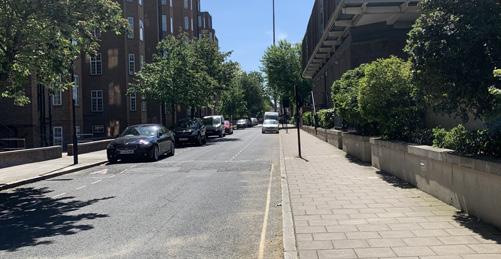
online include ASL “Love Island” on Instagram IGTV, as well as featuring student talents on the Instagram page.
Public Relations Officer Maddie
Wilkin (‘22) said not being together to celebrate the end of the year is disappointing but she said she is confident everyone will find a way to make the best of it.
“We haven’t had Bangers and Bash for two years now, so it’ll be our job as StuCo to make it really good next year,” she said.
Christin Putnam Social Studies Teacher
For teachers, lesson plans for the rest of the year have had to adapt to online schooling and the DLP. Knowing that teachers will not be seeing “ One of my goals is to find ways to continue to build a virtual community.


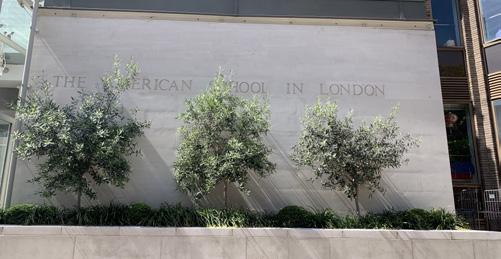
students in the classroom environment for now means teachers have had to find alternate ways to connect with their students.
Putnam said she has had to adapt her teaching to online and to try to have more office hours or opportunities to meet with students in smaller groups.



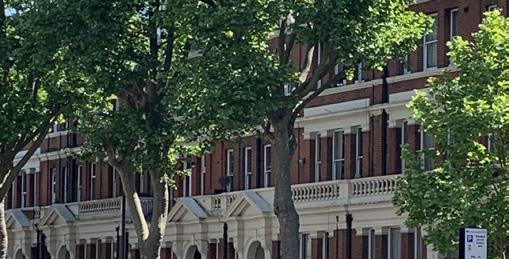






“One of my goals is to find ways to continue to build a kind of virtual community even when we can’t be together in the classroom,” she said.
With the community events such as the Late Cafe and LSSAs transferring to online platforms, Putnam said even with virtual learning, everyone can remain connected.
“The community action seminar, along with the Late Cafe and LSSA videos and just seeing [other students and teachers] in a less formal environment contributes to finding new ways to connect with the community,” she said.
Additionally, Sadrian said that although the learning is now virtual, the community is still staying together.
“We’re all in different time zones but we’ve made it work so far, and I think we can still finish the rest of the year strong,” he said.
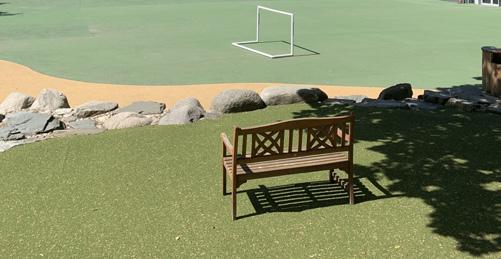

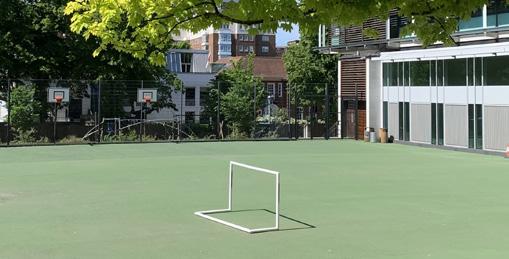
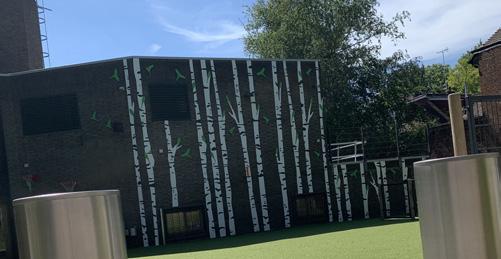

Conservatives carry political stigma
Holding a minority political view at ASL, those who identify as conservative in relation to U.S. politics can feel isolated. However, some conservatives have become more comfortable and choose to be more open with their ideas in the High School.
Deputy Editor–in–Chief: Print Lea George | Deputy Editor–in–Chief: Print Emeritus Isabelle Lhuilier | •
Establishing political views V ika Pertsovsky (’22) identifies politically as an American conservative.
“I am a conservative, but I wouldn’t describe myself as far right.” Pertsovsky said she is often associated with far right mentalities due to her conservative viewpoints.
“People just kind of associate me [as far right],” Pertsovsky said. “It’s horrible. People think I’m a racist, anti–feminist, pro–life person.”
Additionally, Pertsovsky said people are often surprised by her political standpoints due to her gender. She said there is an assumption that feminism and conservatism cannot coincide, which she disagrees with.
Moreover, Pertsovsky said that conservatism does not limit the rights of women.
“I want to work, I want to have equal rights and I’m a conservative,” she said.
Similarly, Connor Eaton (’21) identifies himself as a financially conservative person.
“I consider myself generally economically pretty right wing, pretty small government conservative, the typical stuff,” he said.
When defining his political beliefs, Eaton said he is not part of extreme associations surrounding the conservative party. “None of the extreme new stuff,” he said. “[I’m] more libertarian and constitutionally conservative.”
Moreover, Nick Lockhart (’20) said he considers himself to be center–right on the political spectrum.
“I tend to lean center, but I’d say center right on most topics,” he said.
Lockhart said that his more conservative opinions and perspective sometimes prevent him from speaking out in class discussions because of the disparity between him and left-leaning students.
“There have been times where, obviously, if I’m the only one in that room who has a [right-winged] view on a particular topic and the majority in that room happens to be more left leaning if not further left, I would prefer just not to speak,” he said.
Liberalism at ASL E aton said he thinks the majority of the school community is on the left of the political spectrum, which can result in those on the right hiding their views.
“It is such a minority of people with conservative contentions to the extent where I think people just get uncomfortable sharing,” he said.
Lockhart said he believes the values of the school may foster this more left–leading environment, which he also said he has observed.
“Going to an American school that promotes free speech and democracy, it’s inherently going to be more left leaning,” he said.
Likewise, Pertsovsky said ASL promotes a liberal agenda, as most teachers lean left in discussions.
“The majority of the population are liberal,” she said. “A lot of articles, like even in The Standard, are focused on liberal [ideas], and there’s nothing wrong with that. The ASL image is just created upon liberalism.”
Likewise, Eaton said he has not met a teacher who is outwardly conservative.
“Now that I think about it, I cannot think of a teacher that I have met at ASL who is particularly conservative,” he said. “I’ve met ones that are a lot more understanding of conservative viewpoints.”
However, Eaton said that a greater variety of political views among the faculty would create a more productive environment.
“In terms of what is healthiest for a developing student body, I would definitely say a lot more political diversity,” he said.
Nevertheless, Eaton said he does not believe that political opinions should have any input when selecting a new member of staff.
“I’m not a proponent of the notion of identity politics where we select teachers based on a political standpoint,” he said. “We should select teachers based on their ability to teach.”
Regardless of where they stand in politics, Lockhart said he believes teachers should refrain from commenting on certain topics, in particular the current administration in the U.S.
“Teachers should remain impartial on that matter, just because students need to form their own opinions without other people sharing theirs, especially authoritative figures like teachers,” Lockhart said.
Receiving judgment in school W hen a conservative opinion is brought up in class, Pertsovsky said that it normally results in a negative reaction. She said she finds it hypocritical that a school of thought that preaches acceptance is often intolerant of opposing views.
“The whole idea of liberalism is acceptance of everyone, but that doesn’t really make any sense if they don’t want to accept my opinions,” she said. “Maybe they’ll follow their philosophy eventually.”
Although Eaton said that most people at ASL remain respectful to him, he said there is still judgment surrounding those who express more conservative viewpoints.
“There is definitely this subsurface, unspoken judgement on who you [are] depending on your political viewpoints, which I think is a problem

